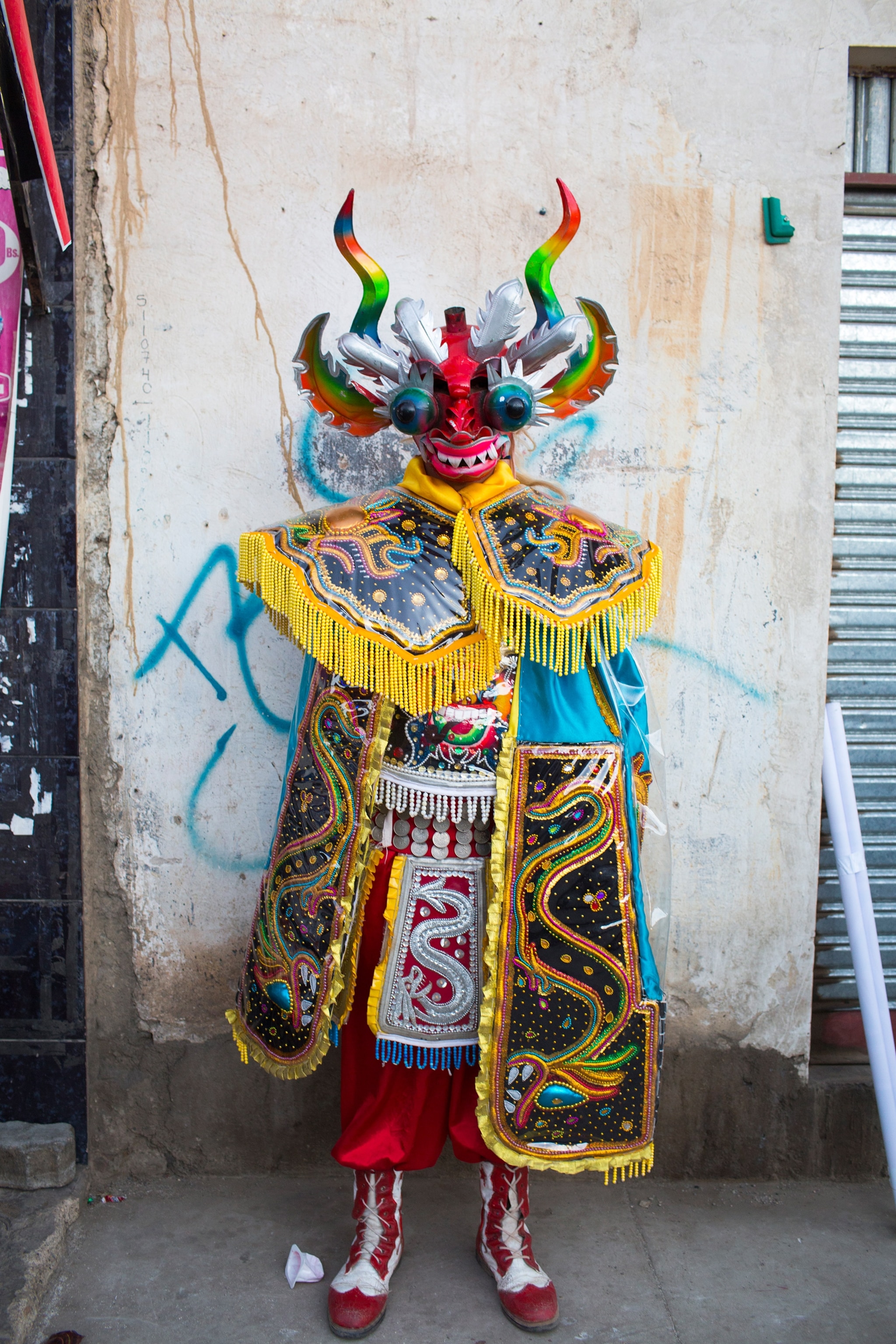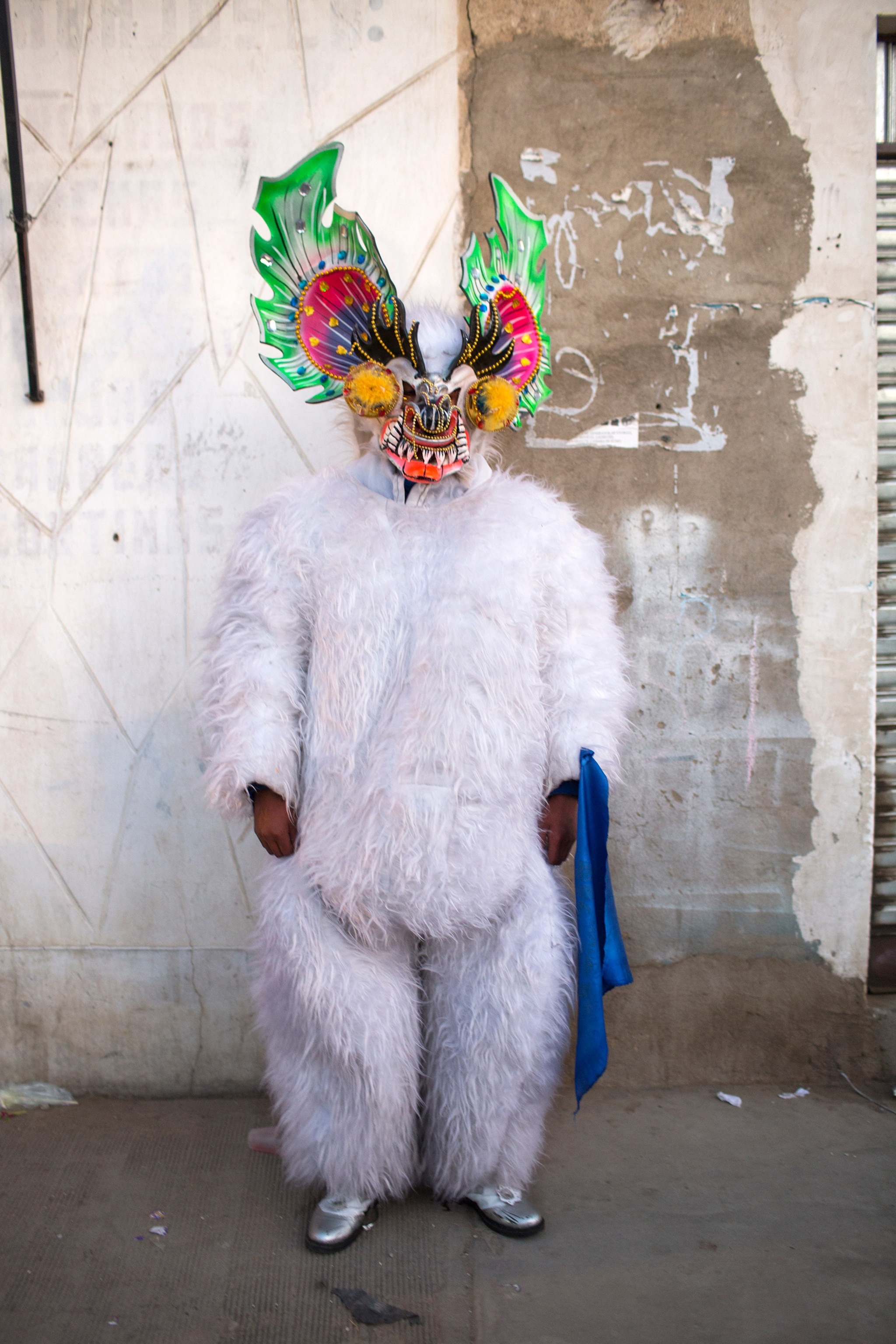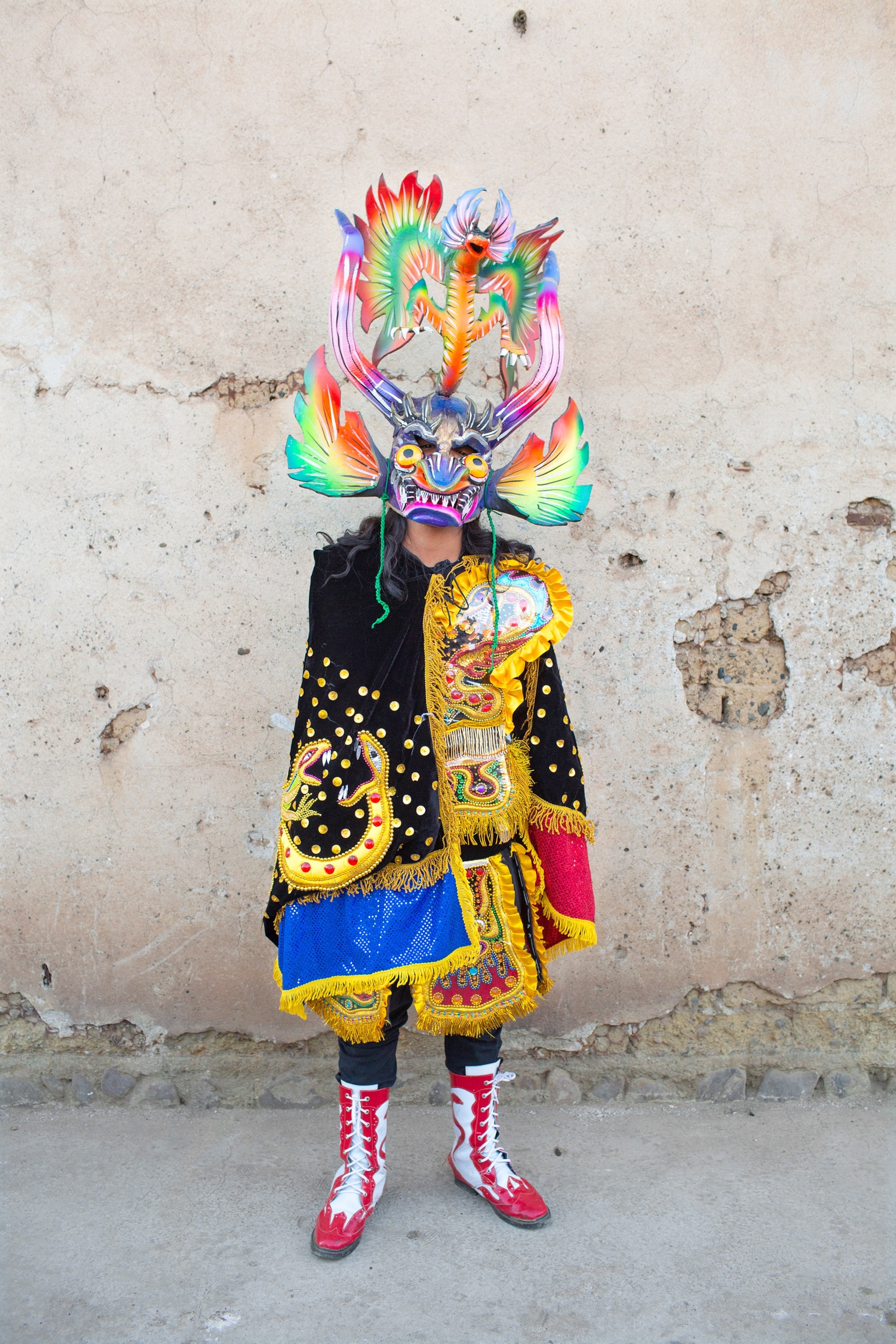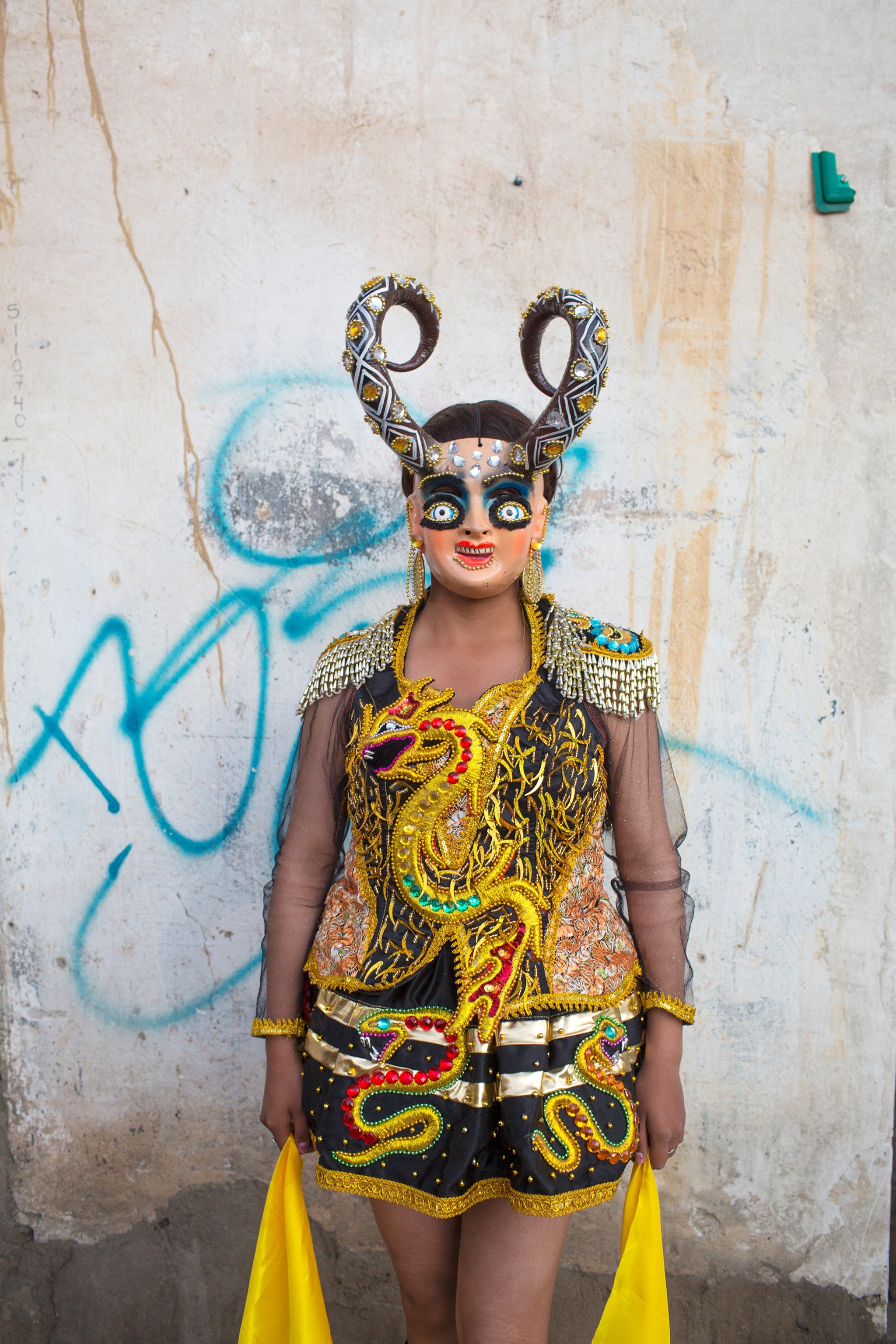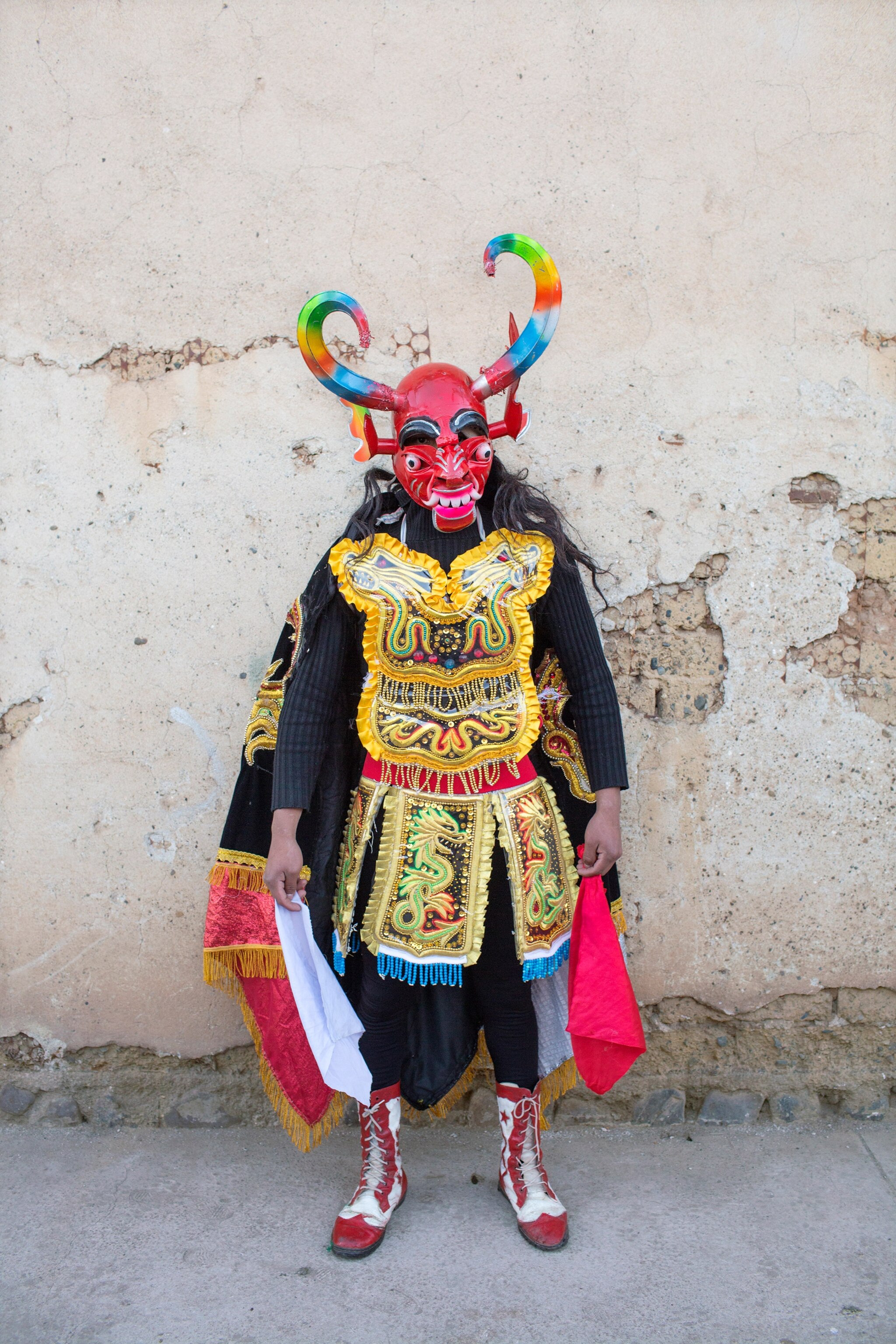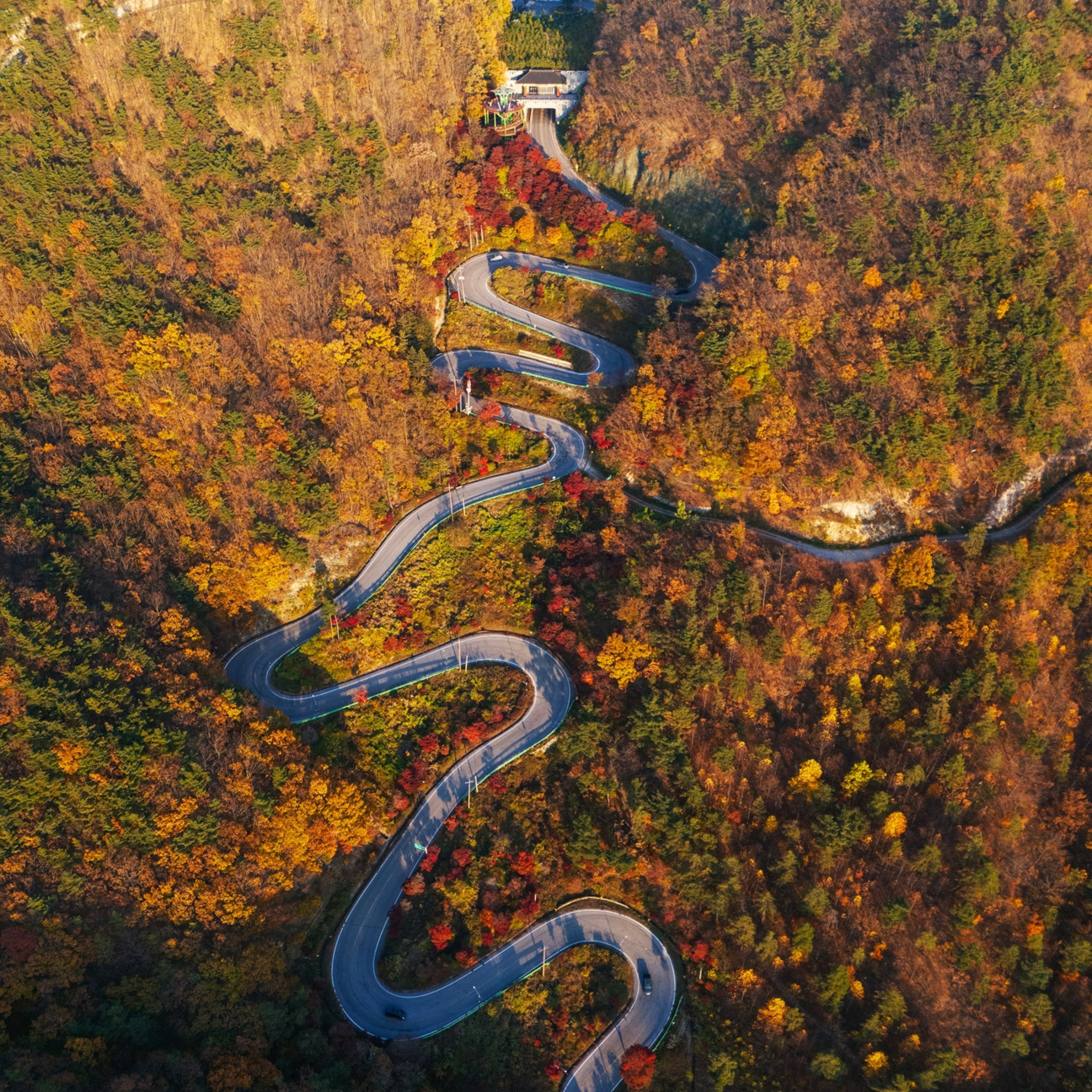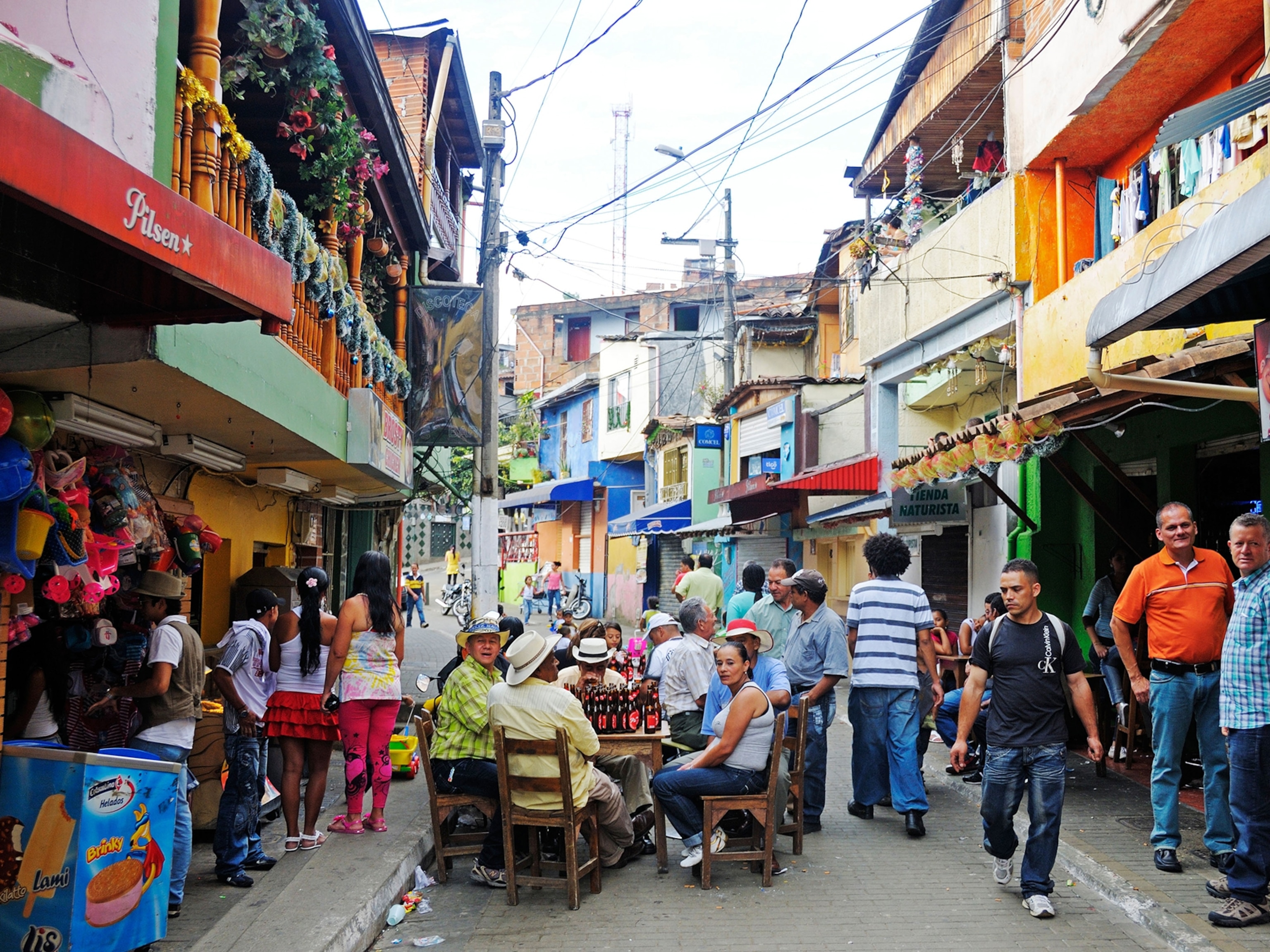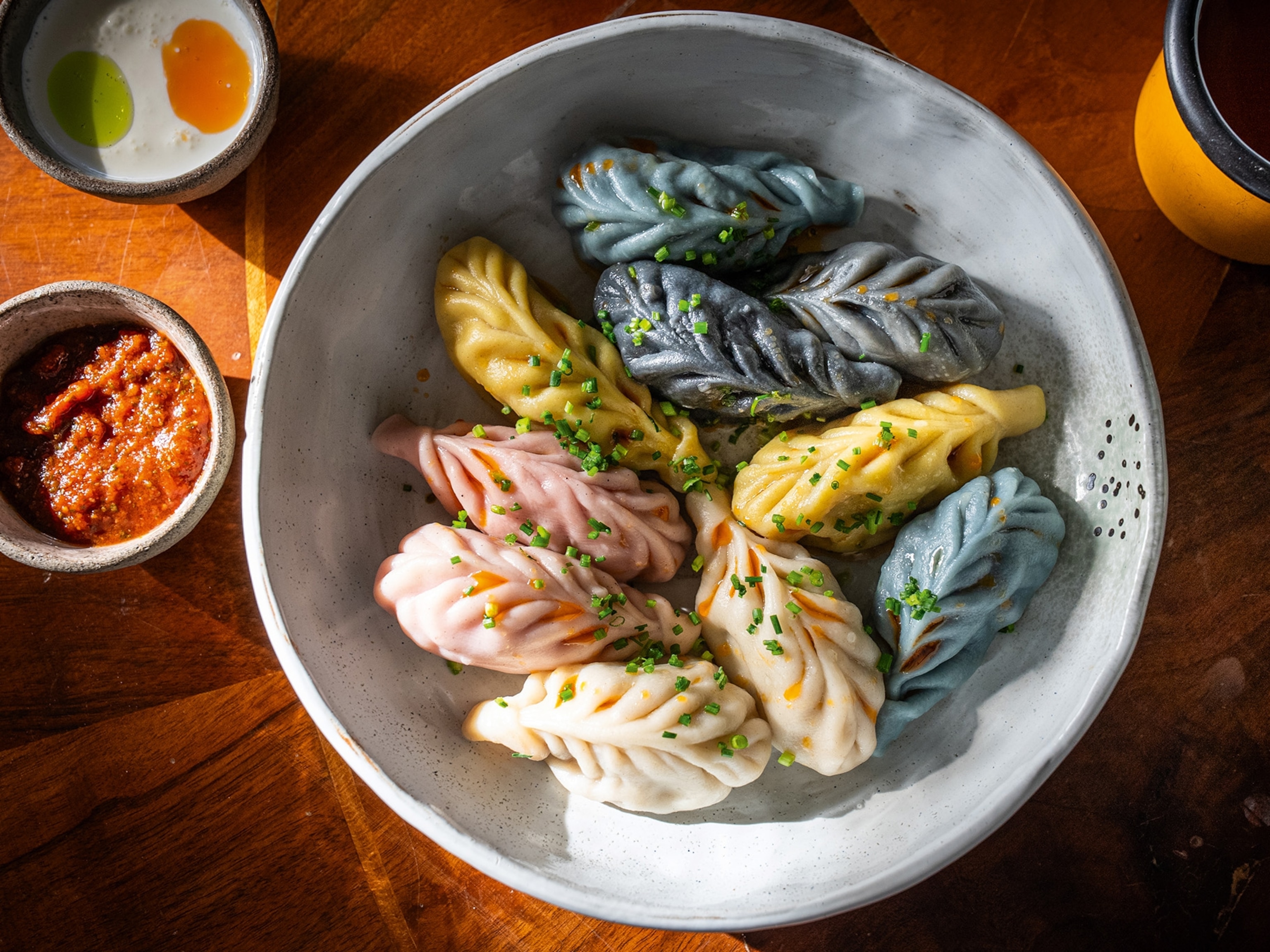A Journey to the Homeland of Hot Sauce
Discover hot peppers and bright colors on every corner in Bolivia.
In a small courtyard in the sprawling Andean city of Sucre, Bolivia, Claudia Vicente Ventura unloads a bowl of chopped red and green chilies onto a flat stone. Wearing a blue apron and with her black hair plaited into two long braids, she takes another stone, smooth and oblong, hunches over, and rocks that stone back and forth over the chilies to mush them into a paste. She does the same with a bowlful of tomatoes. Combining the two, she adds chopped onions, stirs in some water, and tastes her latest batch of Bolivian llajwa (YA-hua), the hot sauce that seems to power this landlocked nation in the heart of South America—and the object of my quest.
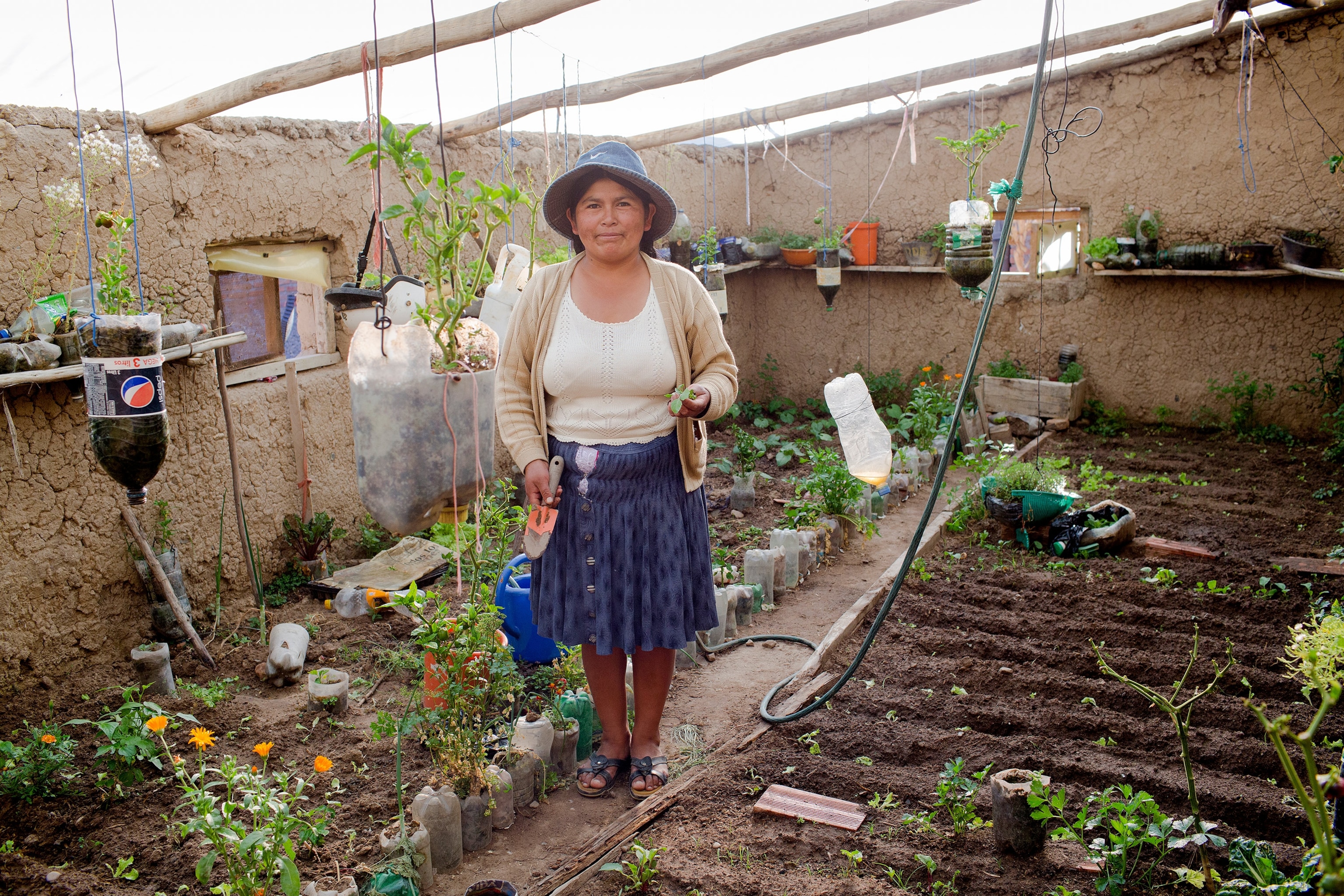

“Philosophers have often looked for the defining feature of humans,” writes psychologist Paul Bloom in his book How Pleasure Works. “I’d stick with this: Man is the only animal that likes Tabasco sauce.” And what distinguishes Tabasco sauce? Capsaicin, the tasteless compound that makes hot sauce hot and is found solely in chilies. Most animals avoid chili peppers, but birds and some of us humans love the multicolored fruits.
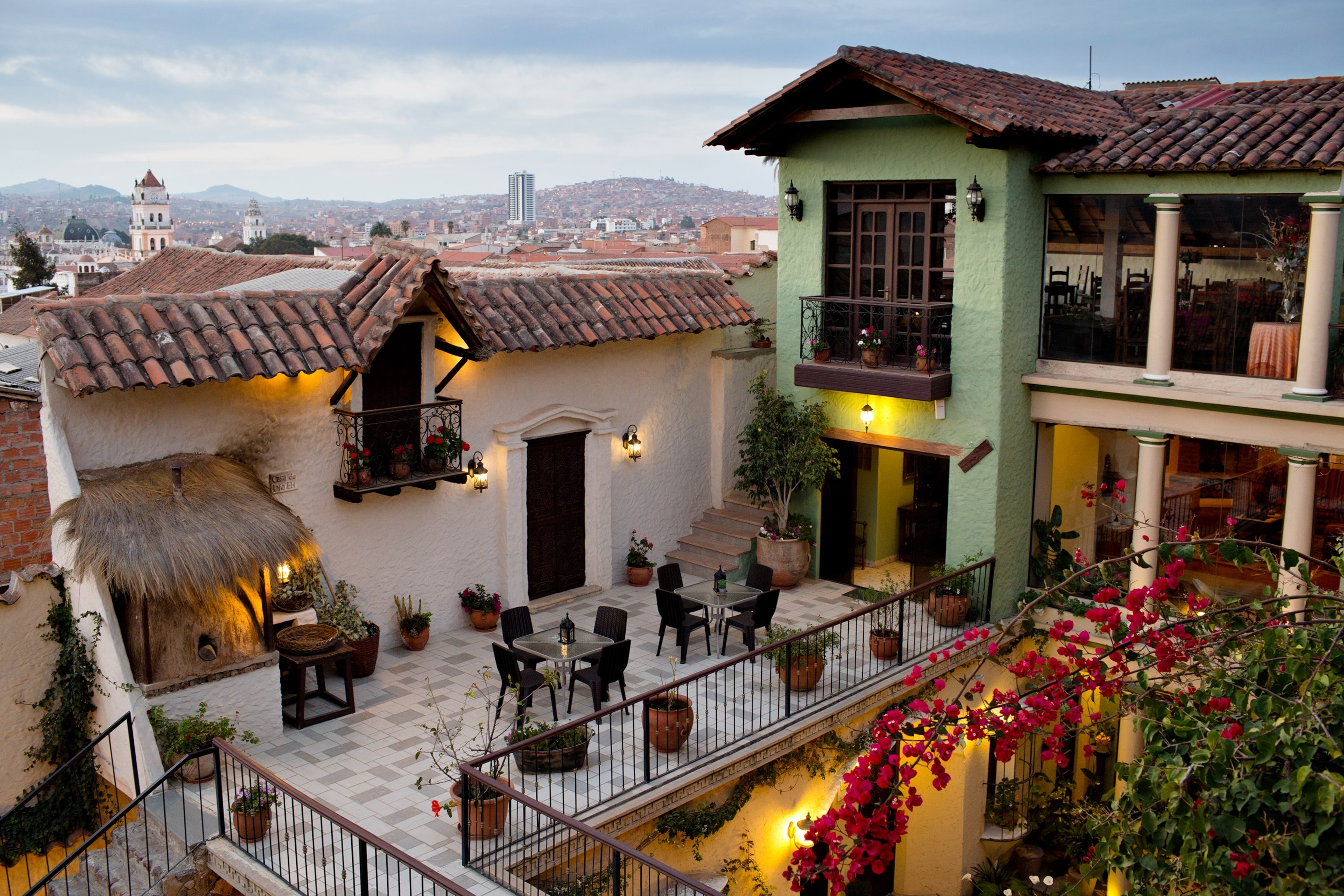
Today chilies are integral to cuisines around the globe, but they were only introduced to the larger world in the 15th century by Christopher Columbus, following his collision with the Americas. Some scientists trace the plant’s evolutionary origins to a part of Bolivia between Sucre and Cochabamba, two cities that will form the backbone of my journey. With the recent publication of my book Hot Sauce Nation, about our national love affair with spicy food, I’m intent on a kind of pilgrimage through this birthplace of the chili pepper and to find hot sauce in its purest, most ancient form.
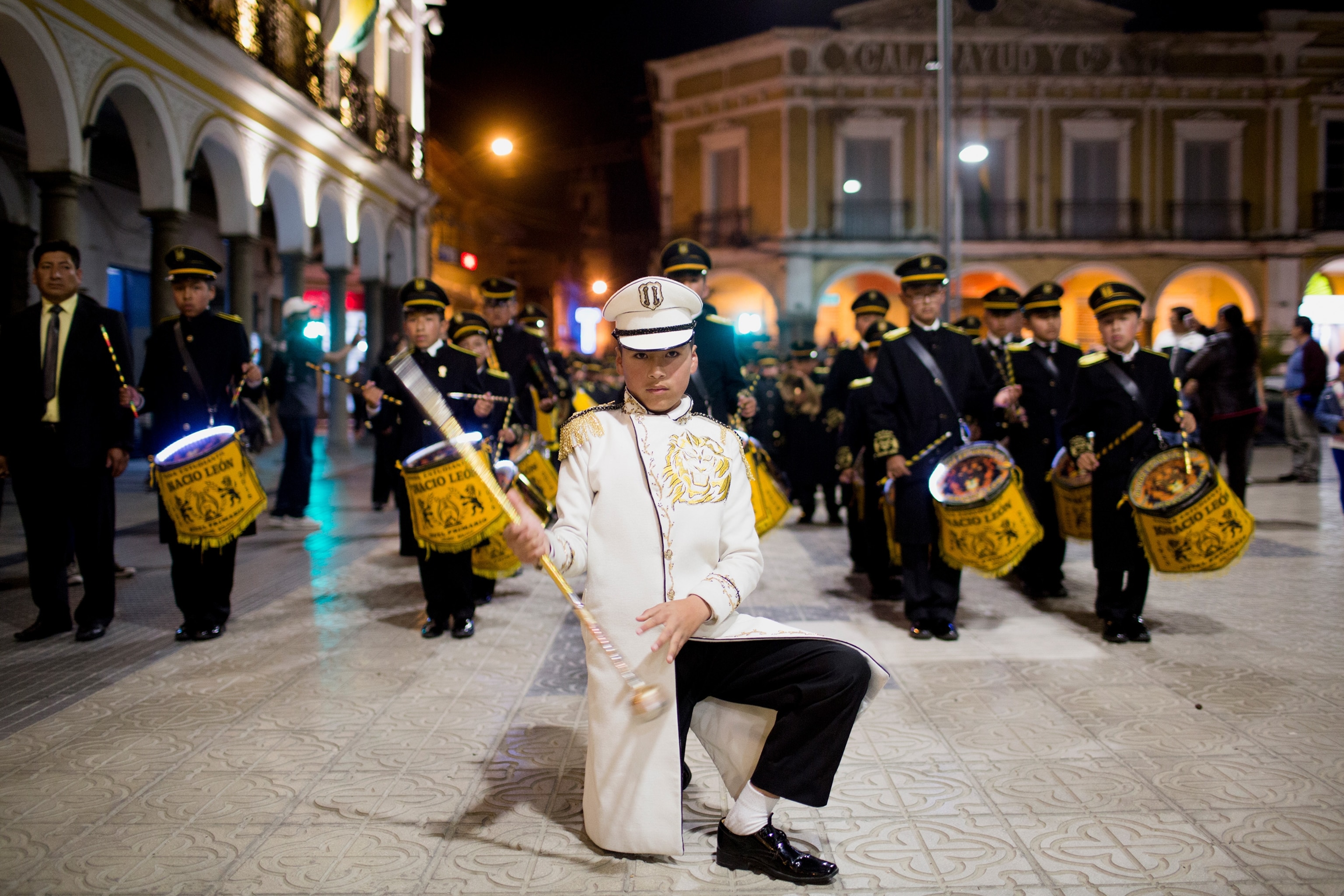
I settle into my lodging in Sucre, the Hotel de Su Merced, an 18th-century Spanish-style residence. From the rooftop terrace I look out over the city’s bleach white buildings, assembled around the meticulously manicured Plaza 25 de Mayo, named for the day in 1809 when a protest helped launch Bolivia’s movement toward independence from Spain—an event announced with a peal of the bell at the white, arcaded Basílica de San Francisco de Charcas. Bolivia’s first seat of government, Sucre remains the ceremonial capital and holds many attractions for history and culture buffs, from the silver and gold artifacts in the Treasure Museum to the National Ethnography and Folklore Museum and a Museum of Indigenous Art, featuring colorful, intricately woven textiles made by local indigenous communities. The city is the urban center for Quechua-speaking people living in surrounding rural areas. A day trip will bring you to the village of Tarabuco, where on Sundays people from even farther-flung places gather to sell and barter handmade crafts, produce—chili peppers, potatoes, carrots, tomatoes—tools, and coca.
Sucre is known for its tranquillity, but on this weekend in early September the city is electric. A thumping outdoor rave will kick off at midnight on Friday, making for a restless night’s sleep. By late morning Saturday, marching bands and costumed dancers are high-stepping and twirling through the streets, only sometimes in unison. It’s all a dress rehearsal for next weekend’s celebration of the Virgin of Guadalupe, the city’s patron saint.
Away from the commotion in the city center, in the lower-income Barrio San Antonio, whitewashed walls give way to red brick and exposed rebar. Claudia Vicente Ventura has set up her food stall in time for the sajra hora, the traditional Bolivian midmorning or midday snack. I’ve been guided to her by my taxi driver, Mayra Garrado, who, like Ventura, wears her waist-length black hair in the twin braids of a cholita, or Bolivian woman of indigenous descent. Along with many Bolivians, Garrado is bilingual in Spanish and an indigenous language. She explains that sajra is Quechua for “evil,” making sajra hora the “evil hour” between meals, when stomachs start growling and people turn hangry. For five bolivianos (75 cents), Ventura sells me a plate of potatoes, hominy, and grilled chicken gizzards, with all the llajwa I can stomach. It’s rough fare, the gizzards are tasty but gristly. The llajwa, however, is spicy and fresh, giving the food a serious bite and adding the bright flavors of raw vegetables.
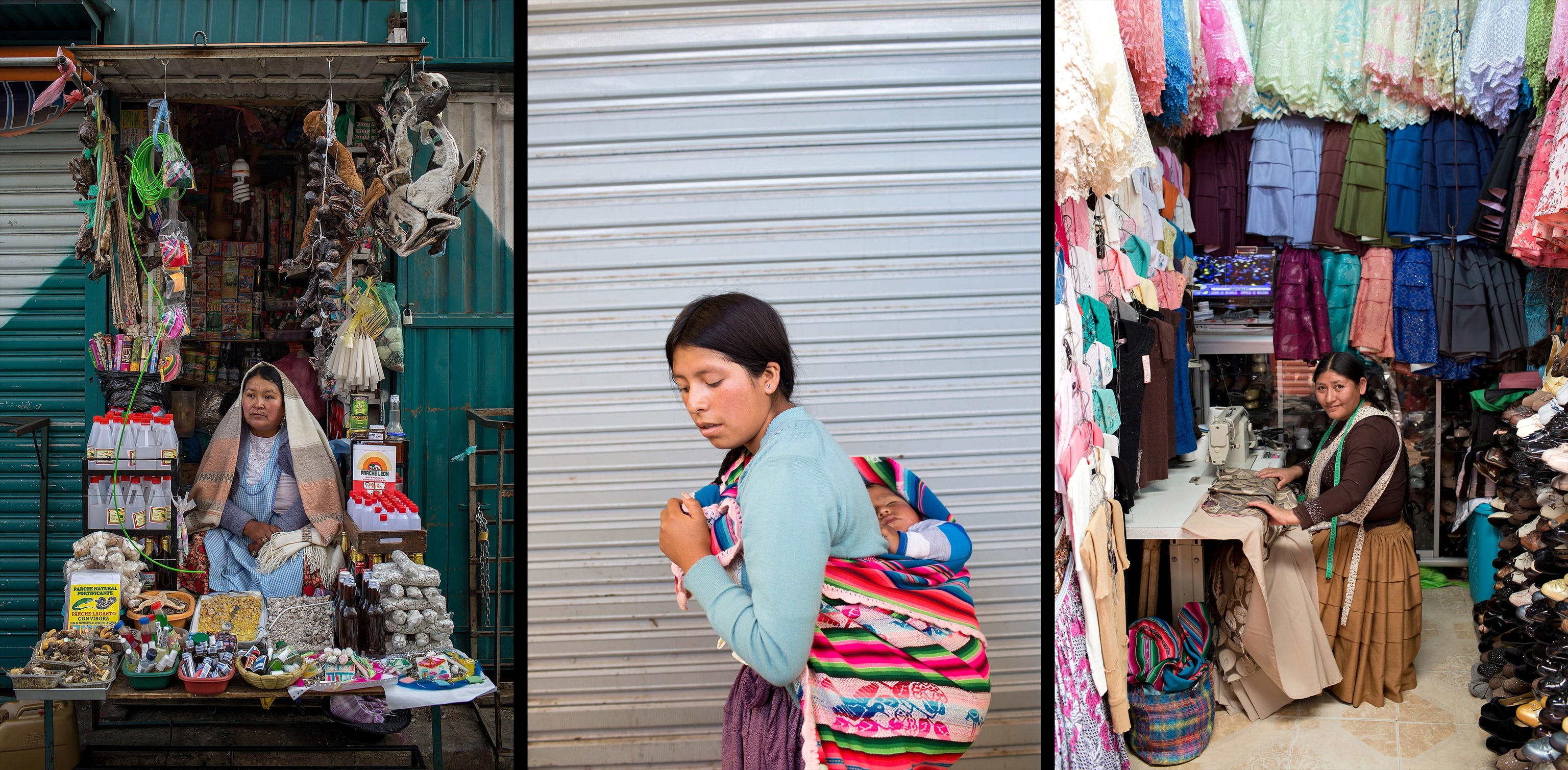
“We do not eat without llajwa,” Garrado tells me, a phrase I will hear repeated many times on my journey. “It’s like a vice. It’s something that hurts you, but you also like it. Like a drug. Some people take drugs and can’t stand to be without them. We here in Bolivia? We’re addicted to llajwa.”
Ventura’s llajwa is the classic modern version, made with locotos, the most popular among the kaleidoscope of chilies that grow in Bolivia. The locoto is the only pepper for which scientists have not found a wild relative, which suggests a long relationship between humans and plant. (Some Bolivians say locotos get jealous; if you pick a pepper from a plant that is not yours, your locoto plant will die.) But I’m looking for the primogenitor hot sauce, and Ventura’s preparation, which includes onions—an Old World crop—isn’t it.
So I make for Cochabamba, the “City of Eternal Spring,” considered by many Bolivia’s culinary capital. Birthplace of the famous Bolivian dish pique a lo macho—a heaping pile of beef, french fries, eggs, and vegetables, accompanied by a few locoto slices—Cochabamba is the urban nexus for a highly productive agricultural region that supplies the city’s vast markets as well as other parts of Bolivia.
Among its notable locals is award-winning chef Gaby Terán Clavijo, who works with a group that preserves Bolivia’s culinary traditions. She owns La Gaviota (The Seagull), a small restaurant recommended to me for authentically traditional Bolivian food, in a quiet neighborhood sheltered from Cochabamba’s pandemonium.
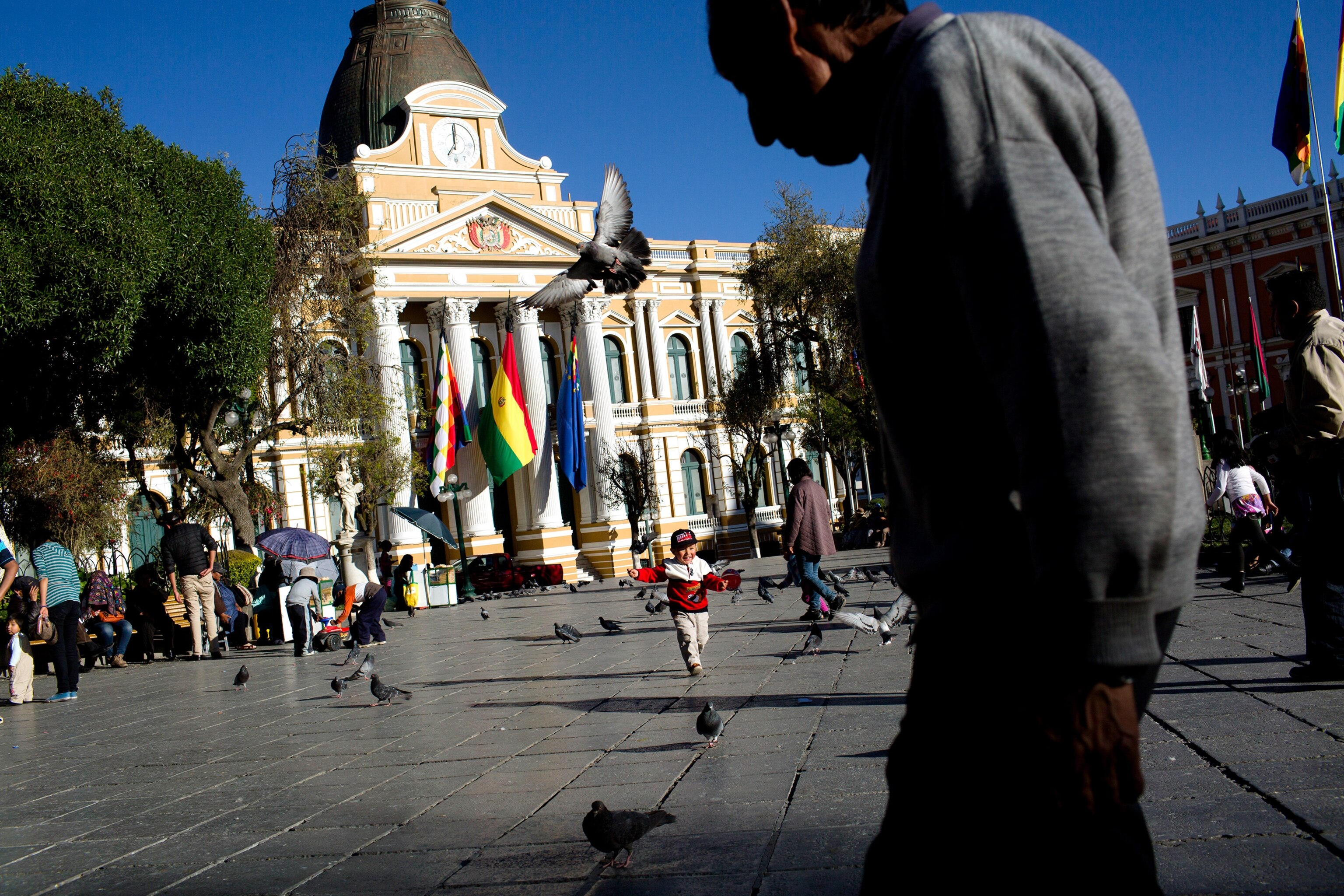
I stop by one afternoon to learn about her version of llajwa and soon am snacking on fried guinea pig while Terán prepares different takes on the hot sauce. Like Ventura, she makes llajwa on a flat grinding stone—called the batán—which she considers essential. “It tastes more rich, healthier, when you use the stone instead of a blender,” Terán explains, noting the adoption of the electrical appliance by some. She’s right, I confirm later, when I buy a bag of blender-made llajwa. The act of crushing the ingredients rather than slicing them with a blender does a better job of bursting open the cells in which flavors live, releasing them into the sauce. And the small amount of heat produced by a blender can ever so subtly degrade fragile flavors in raw vegetables. Without the batán, an implement central to Bolivian identity, llajwa wouldn’t be what it is. Each batán is passed down through generations. Terán’s belonged to the grandmother of her mother-in-law.
I watch Terán prepare, first, uchu llajwa, a blend of locotos, tomatoes, uchu—another variety of chili, typically burned black over a flame—and quirquiña, a pungent native herb sometimes called Bolivian cilantro. Next she gins up an austere llajwa verde, using only green locotos and salt. Finally she takes pleasure in feeding me a helping of exceedingly spicy llajwa normal, a mix of green locotos for flavor, red ones for heat, tomatoes, and quirquiña. These are pre-Columbian forms of llajwa; they make clear that the soul of this sauce is the elemental freshness of the raw chilies.
It’s the raw chili in its element, rooted in the soil, that will define the final part of my quest, as I drive into the mountains to pick a locoto right off the farm.
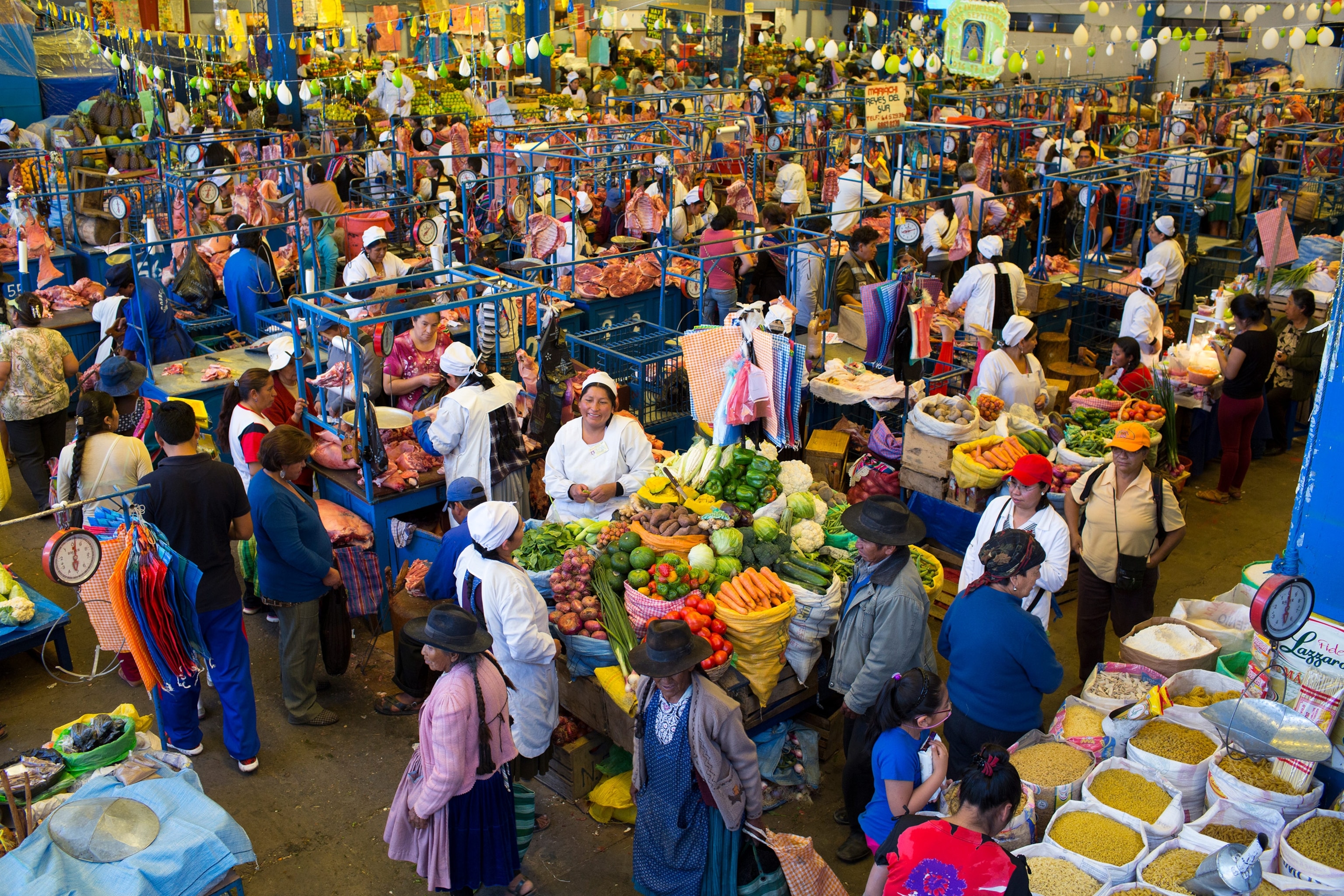
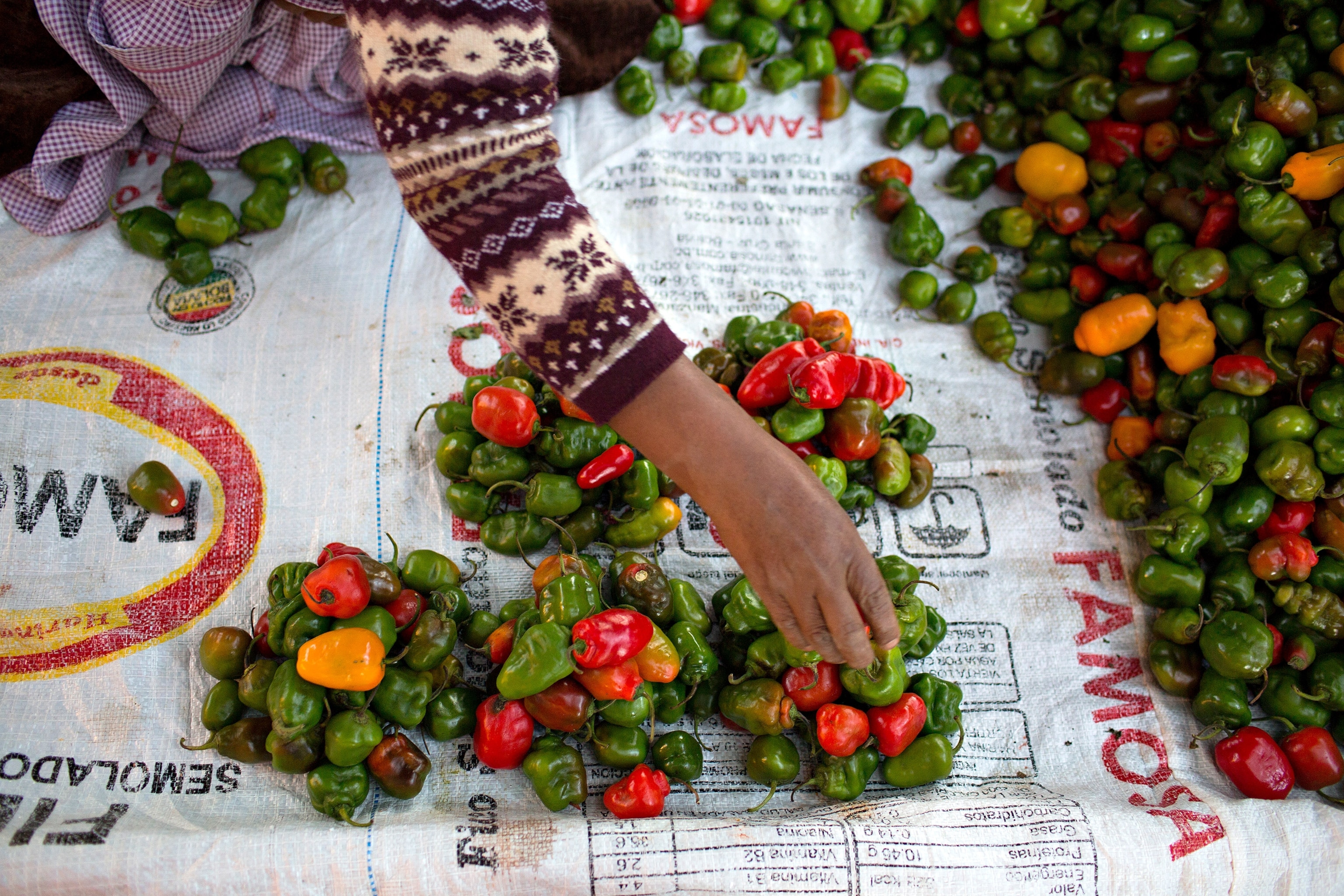
I happen upon market day in Colomi, a tiny town in the highlands an hour east of Cochabamba, frequented by locoto farmers from isolated hamlets in the surrounding mountains. The main square bustles as people shop, trade, and catch up with friends. Children run in packs, sweets in hand, laughing as they weave through the throng. In the distinctly untouristy market, vendors sell essentials: spices, cooking oil, llama fetuses (Bolivians often bury a llama fetus in the foundation of new construction projects to ensure success), tools, dried chilies, and freshly harvested green and red locotos. I try to strike up a conversation in Spanish with an old Quechua woman before realizing she can’t understand a word I say. An onlooker translates my apology into Quechua.
It’s nearing noon and I still have a long drive ahead, so I go to Colomi’s city hall for a rendezvous with my guide and interpreter for the day, Señor Peredo. When I enter his office, he stands up from his desk, smiles cheekily, and exclaims, “Gringito!” I smile, and we head to my four-wheel-drive pickup, which will take us into Bolivia’s backcountry.
Traveling north from Colomi, we pass Lake Corani, a mountain-ringed reservoir with nascent ecotourism, including a couple of restaurants and some cabins to rent. The landscape is arid and ocher, the yellow grass dotted with green conifers, until we turn onto an old cobblestone switchback carved into the hillside, and plunge into the lush valley of Corani Pampa.
Vegetation clinging to the hillsides becomes denser as the elevation drops and the road turns to dirt, winding raggedly into mountains that extend to the clouds on the horizon. We cruise by terraces of potato plants—a telltale sign that we’re in pepper country, since farmers rotate the two crops. Then, driving past an impossibly steep incline, I spot shrubs of locotos. We stop, and I leap out of the car, ecstatic. Peredo laughs as I scramble excitedly up the hill, phone in hand to record my eureka moment, though in my excitement I forget to turn on the camera. I plunk myself down among the plants and pick a novelty: a yellow locoto. I’ve seen only red and green locoto peppers to this point. I chomp through the thick fruit. It burns. But I’ve come a long way, so I relish the burn. I also taste water and earth in this fruit picked fresh off the land.
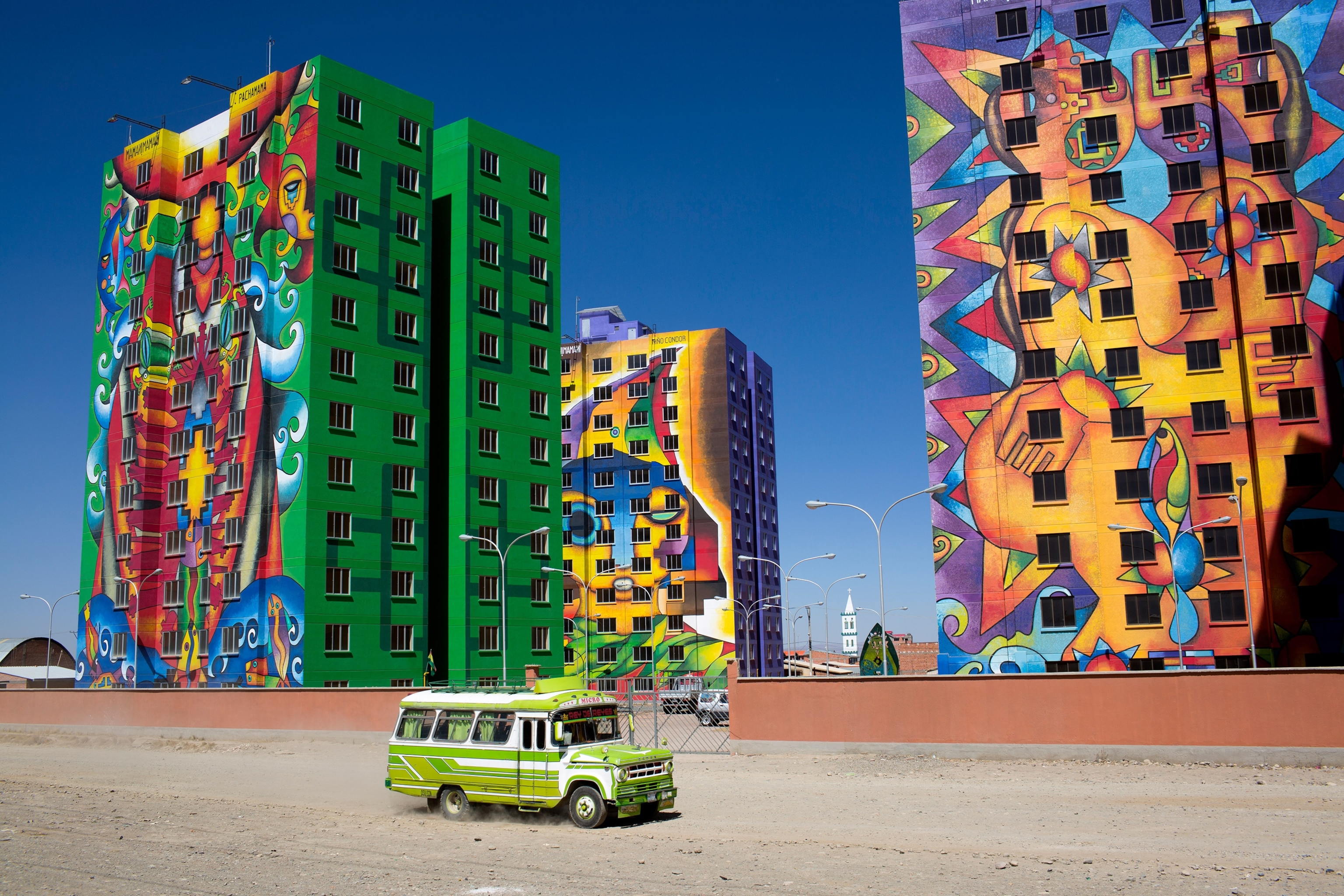
Locotos impart a heat that lingers longer than that of most chilies. As the burn builds in my mouth, I look out on the mountains, dwelling in the moment. If freshness and raw, living flavors are the essence of llajwa, then I’ve reached the source.
For all of Bolivia’s agricultural bounty, the country’s cuisine has suffered the same fate as those in other lands with the rise of fast food. Bolivians are in the enviable position of claiming one of fast food’s most popular ingredients—the potato originated in the Andes—as a traditional dish, but these days a lot of mayonnaise and sausage also is involved. The country was ripe for a culinary movement, and in recent years one has taken hold, centered in the capital of La Paz and spearheaded by locals partnered with, implausibly, a few enterprising Danes.
Among them is Danish chef Kamilla Seidler, who, invited by fellow Dane and star chef Claus Meyer, moved to La Paz in 2012 to open the restaurant Gustu. (Meyer’s award-winning Copenhagen restaurant, Noma, is the standard-bearer for the New Nordic Food Manifesto.) Set in an upscale neighborhood on La Paz’s south side, Gustu is kind of a restaurant-meets-NGO, giving aspiring low-income Bolivians the opportunity to attend culinary school, study English and fine-dining etiquette, and work in the restaurant business. To develop Gustu’s menu, Seidler traveled all over Bolivia, collecting knowledge about local ingredients with a mission to respect tradition but innovate. Gustu’s revolution is small yet growing; a few other places also committed to slow-food principles have recently appeared in La Paz.
“There are so many ladies cooking very good Bolivian food that I don’t want to step on their territory,” Seidler tells me over coffee at Gustu. One of Gustu’s challenges as a sophisticated restaurant catering to an upscale Bolivian and international clientele has been what to do about llajwa.
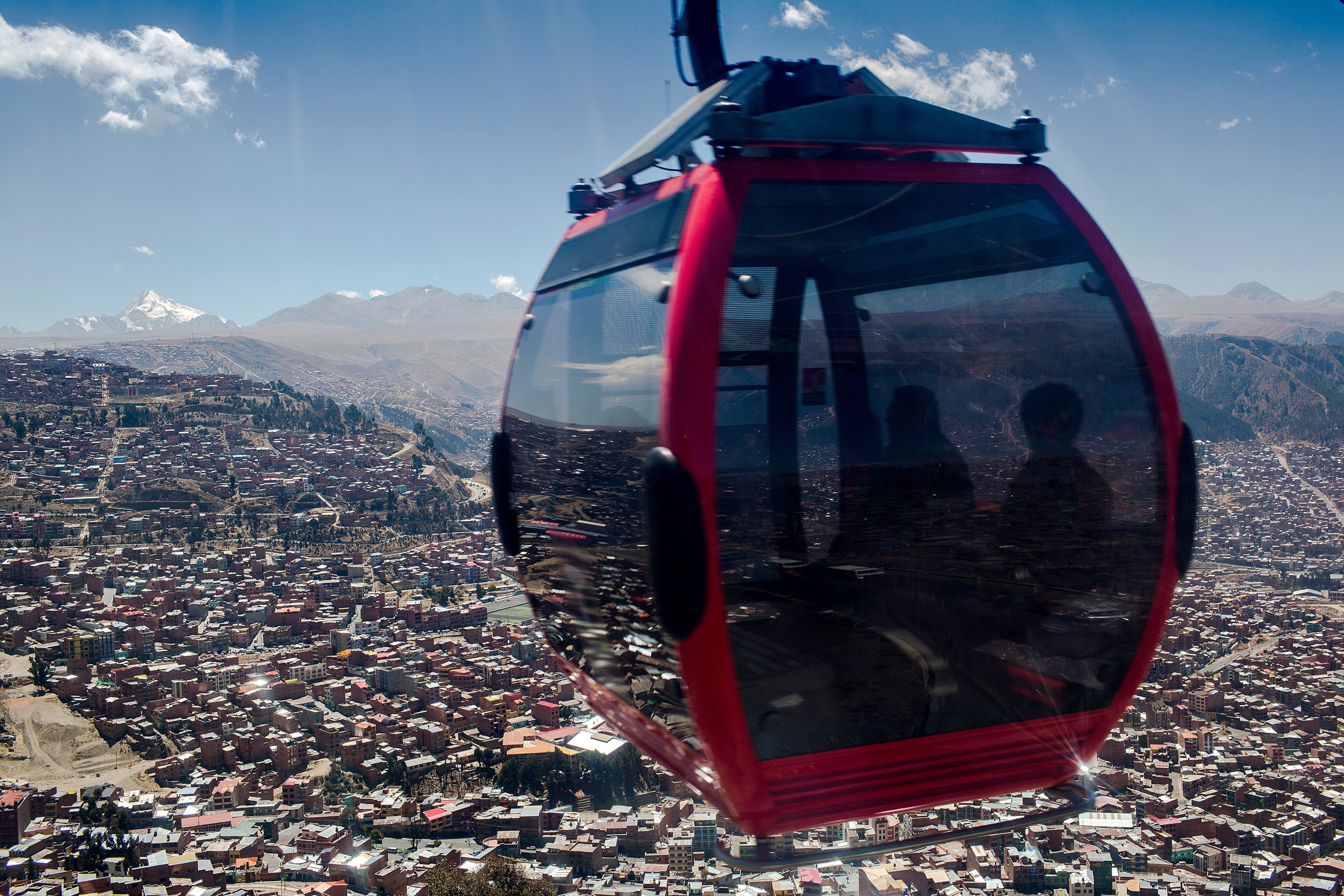
- National Geographic Expeditions
“We came here and everything was llajwa, llajwa, llajwa,” Seidler says. She didn’t want to use llajwa in every dish, but banishing it was, of course, unthinkable. “I love llajwa when I eat at a typical restaurant here,” she says. “We wanted to do llajwa, but we wanted to do something different with it without offending anybody.”
One result? A cocktail. Gustu chefs prepare llajwa the traditional way, on a batán, freeze it, distill it, then mix it with the local singani brandy for a spicy drink garnished with a cherry tomato.
“Some people ask, ‘What is this?’ ” she admits. “Then they sip it and say, ‘It tastes like llajwa!’ ”
Gustu may be pushing llajwa’s boundaries with this cocktail, but the restaurant will serve the pepper sauce when Seidler feels a dish calls for it.
“I love spicy food,” she says. “I think it’s like a drug a little bit. You get happy.”
After all the spicy food I’ve consumed here, ignited by locotos used raw and in a range of llajwa preparations, I certainly feel happy. The superfresh flavors of a llajwa made on the spot sets it apart from bottled or cooked versions. The sauce’s vegetables, herbs, and cool plant juices play with the burn of the capsaicin and the heat of a cooked dish to create dynamic flavors and textures. But perhaps best of all, I’ve learned that humanity’s most ancient hot sauce tradition, whether at street-food stalls or in gourmet restaurants, is still fiercely alive.
Denver Nicks (@DenverNicks) is the author of the 2016 book Hot Sauce Nation: America’s Burning Obsession. This is the first Traveler assignment for Uruguayan photographer Christian Rodriguez (@christian_foto).
